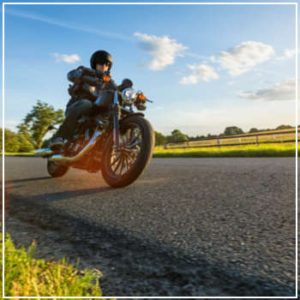Once the warm weather of spring arrives, you’ll be back on your motorcycle. Are you ready for your first trip? Rather than hitting the pavement with no destination in mind, plan ahead to increase your chances of a successful journey.
1. Know Where You’re Going

For your first trip, choose a familiar destination where you already know the roads. However, potholes and uneven pavement may not be addressed by early spring. Even a route you know well could present a few riding challenges.
Wherever you go, you will need the stamina to get there. No one wants to get fatigued halfway through and turn around. Pick somewhere you know you can ride to without significant warm up. If you’re traveling in a group, decide on the destination together.
You can also get a sense of the route and current conditions with a trip in the car.
2. Pack Up Supplies
Never set out on a motorcycle trip without the right supplies. Bring the appropriate riding gear, including waterproof pieces in case of rain. This time of year, temperatures can still plunge unexpectedly, so have a balaclava, gloves and a lightweight set of layers.
On the flip side, you don’t want to lug around too much gear. Clothing aside, stick to the basics for warmth, shelter and food without weighing down your bike.
3. Check Your Motorcycle
Even if your motorcycle was properly winterized, it will likely need maintenance before your first ride:
- Fuel: You likely added fuel stabilizer before placing your bike into storage, but make sure your bike has fresh gasoline before you set out.
- Tires: Check the tires for flat spots, lumps, general unevenness and proper inflation.
- Fluids: Change the oil and check the brake fluid to make sure your bike is not leaking.
- Belts: Check the belt drive system for wear and tear.
- Suspension: Check for rust and tarnishing around the suspension system and have it scrubbed off.
4. Know Winter Leaves Its Mark
Depending on when you venture out, the remnants of salt and sand may still be on the roads, especially around corners and edges. They may create an uneven surface and affect your traction, so keep your eyes peeled.
Also, potholes may still need to be filled and paved. When a car hits a pothole, minor repairs may be necessary. For motorcyclists, potholes are a major accident waiting to happen. If you can see the pothole ahead of time, go around it rather than taking a risk.
Along with potholes, rain and snowmelt erode the asphalt, resulting in streaky, uneven or rough textures or crumbing pavement. During your journey, scan the road ahead to give yourself enough time to react.
In addition to these factors, evening temperatures may still be cold enough to freeze puddles of water and other spots of moisture. For this reason, look out for black ice and make sure your tires have enough treads for potentially slippery roadways.
5. Brush Up on Your Skills
Aside from taking a motorcycle skills course, get back into the rhythm of riding by going around the block a few times at a slower speed. Take note of your reaction time and how well you turn. Initially, both may be a little “off.” Start small and gradually build your skills back up, until you’re ready for your first full trip.
Once you’re ready to ride, you should do so defensively. It’s been a few months since motorists have seen a bike on the road and they might not be ready for you. As such:
- Always watch out for other vehicles
- Make eye contact with drivers
- Never lane split
- Keep your distance for changing lanes
- Never pass in a no passing zone
- Follow the rules of the road
Where are you planning to ride this spring? Tell us your plans on our Facebook page.
